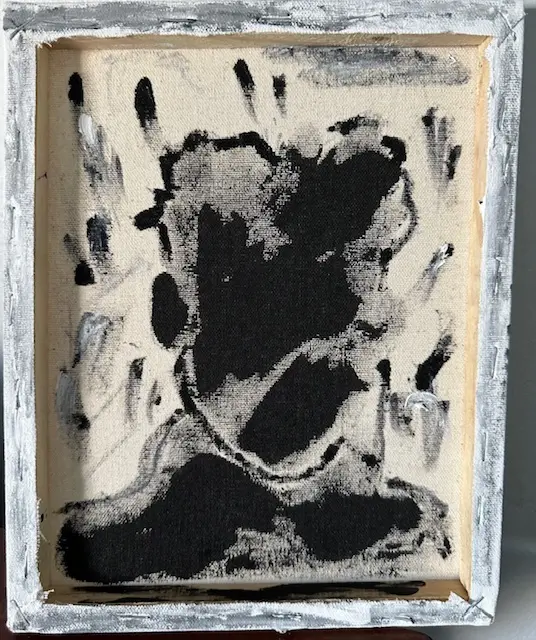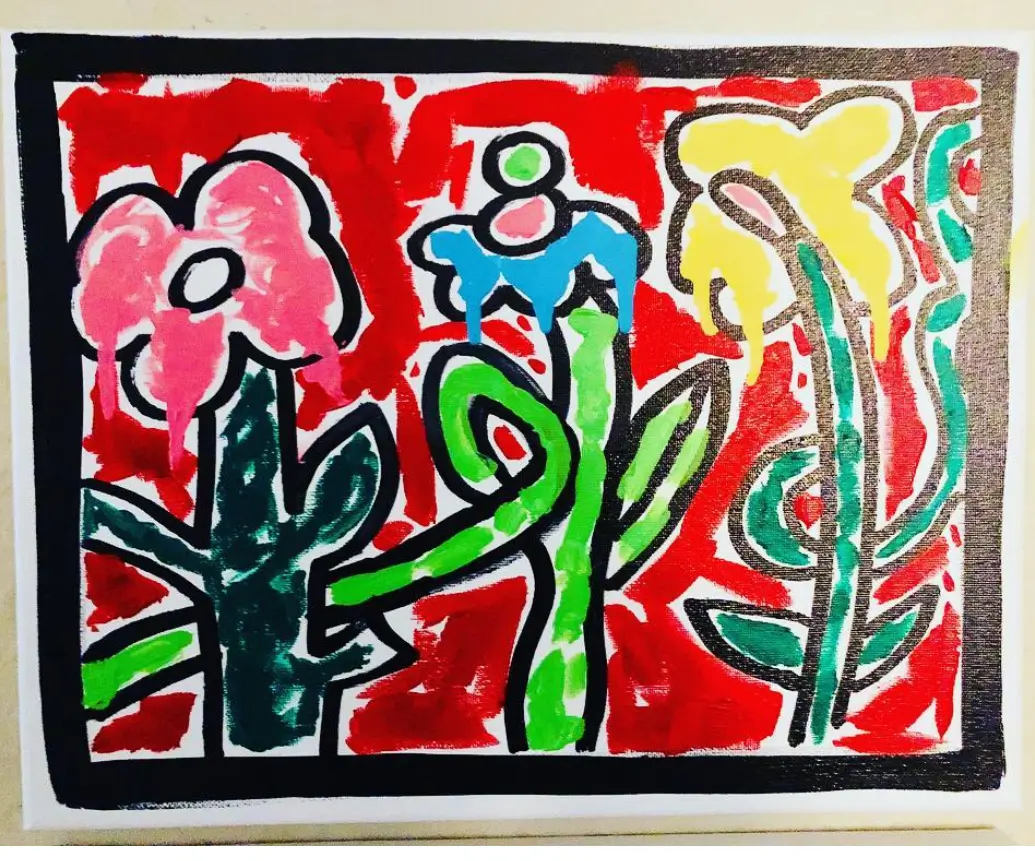Has the Statue of Liberty Ever Been painted?
Have you ever looked up at the Statue of Liberty and thought, “I wonder what she’d look like with a psychedelic paint job?” Well, wonder no more, because some of the world’s most famous artists have tackled this iconic monument with their brushes, paints, and creative vision. From the bold pop art of Andy Warhol to the politically charged stencils of Banksy, the Statue of Liberty has inspired some truly incredible works of art over the years. So, let’s take a closer look at some of the artists who have taken on this towering symbol of freedom, and see how they’ve made Lady Liberty their own.

Why Did Peter Max Paint the Statue of Liberty?
Picture it: New York City, July 4th, 1976. The Bicentennial celebration is in full swing, and the streets are alive with the sound of fireworks and patriotic fervor. And then, from out of nowhere, a voice cries out: “I must paint the Statue of Liberty!”
Okay, maybe it didn’t happen exactly like that. But for artist Peter Max, painting the Statue of Liberty on that fateful day was a moment of inspiration that would spark a lifelong obsession. And we do mean lifelong – since that first painting, Max has created countless portraits of Lady Liberty, each one more vibrant and colorful than the last.
But why the statue, you ask? According to Max, it’s all about the symbolism. The Statue of Liberty represents freedom, hope, and opportunity – values that are near and dear to the artist’s heart. And let’s face it, it’s also a pretty cool-looking statue. With its flowing robes, torch held high, and stoic expression, the statue practically begs to be captured on canvas.
So, with brush in hand and a vision in his mind, Peter Max began his love affair with the Statue of Liberty. And we’re all the better for it – his vivid, psychedelic portraits of Lady Liberty have become an enduring symbol of the art and culture of the 1970s.
Max’s passion for the Statue of Liberty didn’t stop there. In fact, he went on to become one of the most recognizable artists to depict the iconic monument. Max’s vibrant and colorful portraits of Lady Liberty were a stark contrast to the drab and lifeless images of the past. Max’s love affair with the Statue of Liberty also led him to create a series of “Liberty Heads” which have gone on for the past 40 plus years. These colorful depictions of the statue’s head were adorned with stars, stripes, and bold colors. Max’s Liberty Heads became a symbol of American patriotism and have since become some of his most iconic works.
But Max isn’t the only artist to have been inspired by the Statue of Liberty. In fact, the statue has been a muse to many artists throughout the years. Interesting side note – French sculptor Frédéric Auguste Bartholdi was the mastermind behind the statue’s design, but it was his assistant, Jean-Joseph Perraud, who created the statue’s face.

Edward Moran Gets Inspired By the Statue of Liberty
American painter Edward Moran also found inspiration in the statue, creating several works that showcased the monument’s beauty. One of his most famous works is “The Statue of Liberty Enlightening the World,” which depicts the statue in all her glory as she stands watch over New York Harbor.
Edward Moran was an American painter who found inspiration in the beauty of the Statue of Liberty. Moran was born in Bolton, England in 1829 and moved to the United States with his family when he was just 15 years old. He quickly established himself as a talented artist, known for his romantic landscapes and seascapes.
Moran was particularly drawn to the majesty of the Statue of Liberty, which he painted several times throughout his career. One of his most famous works is “The Statue of Liberty Enlightening the World,” which depicts the statue in all her glory as she stands watch over New York Harbor.
In this painting, Moran captures the grandeur of the statue as she towers over the harbor, her torch held high in the air. The painting is bathed in a warm, golden light that seems to emanate from the statue itself, creating a sense of hope and optimism. Moran’s painting of the Statue of Liberty was created at a time when the monument was in desperate need of restoration. The statue had been neglected for decades and was in danger of crumbling to pieces. Moran’s painting helped to remind people of the beauty and importance of the statue, and played a role in the movement to restore it to its former glory.
In addition to “The Statue of Liberty Enlightening the World,” Moran also created several other works featuring the statue. These paintings showcase Moran’s incredible talent for capturing the beauty of nature and the majesty of man-made structures.
Moran’s paintings of the Statue of Liberty are a testament to the enduring power and beauty of this iconic monument. They serve as a reminder of the importance of freedom and democracy, and of the hope that the statue has represented for generations of Americans and people around the world.

Andy Warhol and Silkscreen Liberty Portraits
When you think of Andy Warhol, you probably think of Campbell soup cans, I bet! However, Warhol has painted many different subjects besides cans of soups. He’s even famously painted Marilyn Monroe. But Lady Liberty was on his lists of painting subjects to cover. Warhol’s pop art style brought a new perspective to the statue, creating an image that was both modern and timeless. Andy Warhol was an American artist who is best known for his contributions to the pop art movement. His art was characterized by its bright colors, bold lines, and use of everyday objects as subject matter. The Statue of Liberty was a recurring motif in Warhol’s work, and he painted several portraits of the iconic monument.
One of Warhol’s most famous paintings of the Statue of Liberty is a silkscreen print created in 1986. The painting is part of a series called “Ads and Illustrations,” and features a stylized image of the statue against a bright red background. The image is deliberately flat and two-dimensional, with no shading or depth, giving it a bold, graphic quality.
Warhol’s use of bright colors and bold lines is characteristic of his pop art style, which aimed to elevate everyday objects and icons to the status of high art. The Statue of Liberty was a perfect subject for Warhol, as it is one of the most recognizable and beloved icons of American culture.
In addition to his paintings, Warhol also created a series of photographs of the Statue of Liberty. These images were created using a Polaroid camera, and feature close-up shots of the statue’s torch and crown. Like his paintings, Warhol’s photographs of the statue are characterized by their bold colors and graphic quality. Warhol’s paintings and photographs of the Statue of Liberty are a testament to the enduring power and beauty of this iconic monument.
They serve as a reminder of the importance of American culture and ideals, and of the role that the statue has played in shaping the nation’s identity. Warhol’s work helped to bring the statue to a new audience, and ensured that it would continue to be celebrated and admired for generations to come.

Banksy Jumps on the Statue of Liberty Trend
Even the famous graffiti artist Banksy has used the statue as a canvas, creating a stencil image of the statue holding a Guantanamo Bay detainee. While he has not painted the Statue of Liberty itself in the traditional sense other artists have, he has created several works that reference the iconic monument and the ideals it represents.
One of Banksy’s most famous works featuring the Statue of Liberty is a stencil titled “The Son of a Migrant from Syria.” This piece depicts the statue wearing a life jacket, a reference to the thousands of refugees who have attempted to cross the Mediterranean Sea in search of safety and a better life. The life jacket is also emblazoned with the word “GREED,” suggesting that the Western world has failed to live up to the values of freedom and democracy that the statue represents.
Banksy’s work often deals with issues of social justice and political oppression, and his use of the Statue of Liberty in “The Son of a Migrant from Syria” is a powerful statement on the plight of refugees and the hypocrisy of governments that claim to uphold the ideals of freedom and democracy.
In addition to “The Son of a Migrant from Syria,” Banksy has also created several other works that reference the Statue of Liberty. These include a piece titled “Better Out Than In,” which depicts the statue holding a paint roller and a bucket of white paint, and another piece titled “The Banality of the Banality of Evil,” which features a photograph of the statue with a cartoon thought bubble.
Banksy’s use of the Statue of Liberty in his work is a testament to the enduring power and significance of this iconic monument. His subversive, thought-provoking messages remind us of the importance of the ideals that the statue represents, and of the need to fight for social justice and political freedom in a world that is often unjust and oppressive.

The Most Iconic Statue in the World, Forever Memorialized in Art
The Statue of Liberty has been a symbol of freedom and hope for over a century, and it’s no wonder that so many artists have been drawn to its iconic beauty. From Max’s colorful portraits to Warhol’s pop art, the statue has been portrayed in countless ways, each capturing its unique spirit and message. As Max once said, “I feel as though I have a love affair with Lady Liberty, and I think it’s the same love affair that the rest of the world has with her.”
As we’ve seen, the Statue of Liberty has served as a canvas for some of the most famous artists of our time. From Peter Max’s colorful portraits to Banksy’s biting commentary, each artist has brought their own unique perspective to this iconic symbol of freedom.
But what is it about the statue that continues to inspire such creativity and passion? Perhaps it’s the timeless ideals it represents – hope, opportunity, and the unshakeable belief in a better tomorrow. Or maybe it’s just that, with its majestic pose and towering presence, the statue is impossible to ignore.
Whatever the reason, one thing is clear: the Statue of Liberty will continue to inspire artists for generations to come. And who knows? Maybe someday, a new artist will come along and paint the statue in a way that we never even imagined. After all, that’s the beauty of art – it’s always evolving, always surprising, and always capable of capturing the spirit of a moment in time.
So let’s raise a torch to the artists who have painted the Statue of Liberty, and to the statue itself – a true American icon that represents the best of who we are, and who we can be.







